Aircraft Mechanic - Engine Rebuilder - Aspiring Machinist
Don't wanna be here? Send us removal request.
Text






Sometimes we get to do specialty repairs to engine components, like this idler tower bore repair. The bore was damaged and oversized, so I machined an aluminum bushing and installed it as per a Lycoming service instruction repair. It gives components new leases on life and gives the customer options outside of having to buy a new crankcase.
#aviation maintenance#piston engines#aircraft engines#lycoming engine#engine overhaul#engine repair#service instruction#crankcase#machining#bushing
0 notes
Text










New year, new build! Here is a snapshot of what the teardown process on a big block Lycoming looks like, from start to parts ready for NDT. It’s a satisfying process to take a dirty, burnt out looking drop off and see it cleaned up and ready for testing. This IO-540 is out of a Robinson R44 helicopter, and one of the more common overhauls we do.
#aviation maintenance#aircraft engines#piston engines#engine overhaul#lycoming engine#aviation#Robinson helicopter
0 notes
Text



Now that the new shop is fully set up and we’ve started builds and repairs again, I’m getting to learn a new process. Cylinder overhauls and repairs are a large part of our work, mainly because we are one of only a few shops in Canada that can do them. Manufacturing and material delays make new cylinders of many engine models expensive and difficult to get, with waiting times of up to a year. It’s nice to be able to give customers more feasible options, especially when having healthy cylinders can really extend the life of a piston engine.
1 note
·
View note
Text




All moved into our new shop and ready to build the next engine. On deck is a Lycoming O-320 H2AD, the first build of its kind for me. It’s a bit of an exotic engine, rare to find and parts are hard to come by .
#aviation maintenance#aircraft engines#engine overhaul#piston engines#lycoming engine#engine rebuild
2 notes
·
View notes
Text

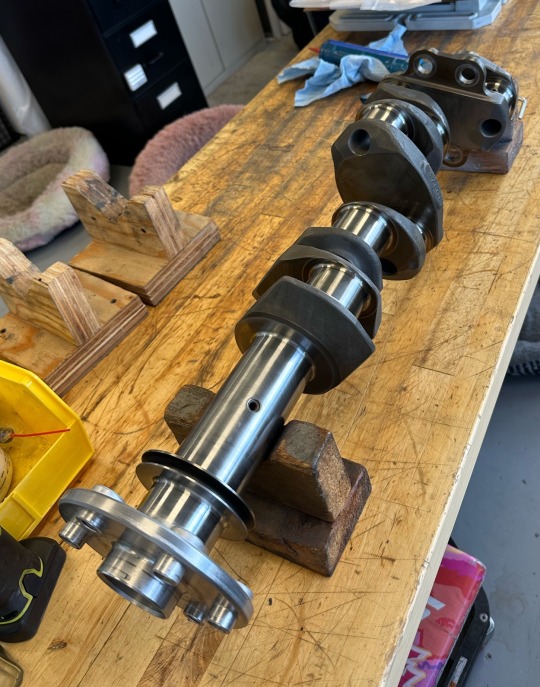

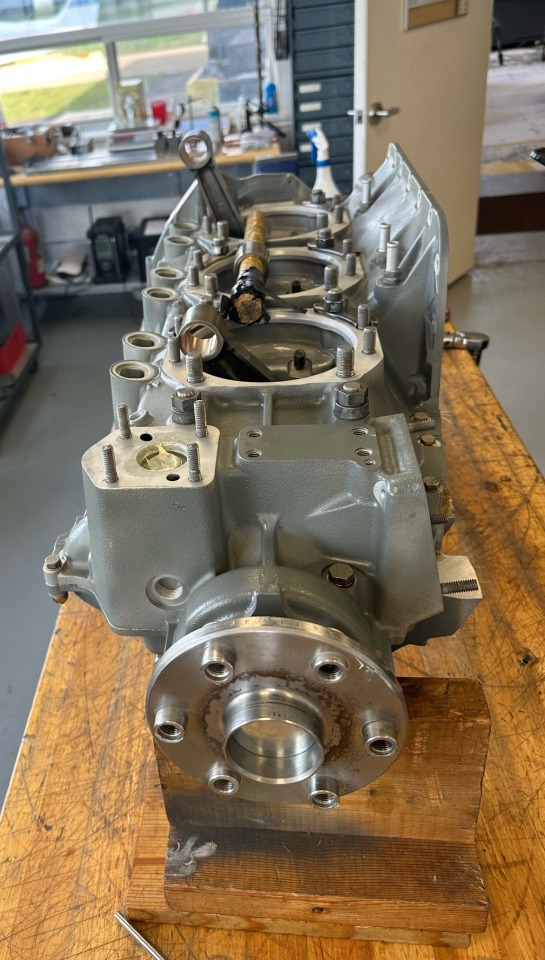
It’s been awhile since I’ve done a big block Lycoming. Here are the stages of closing the case. After measurements and bearing installation, the crankcase is ready for the crankshaft, which gets laid in after gear and rods are installed. Then sealant and silk thread are applied and the halves are closed. Hold down plates are used in place of cylinders to clamp the thru bolts together to ensure the bearings don’t shift post closure.
#aviation maintenance#piston engines#engine overhaul#aircraft engines#lycoming engine#fuel injection#crankshaft
3 notes
·
View notes
Text
A left hand turning, turbo charged IO-360. It started like a dream and ran great. These engines are notorious for being difficult to overhaul and break in.
#aviation maintenance#aircraft engines#continental#engine overhaul#piston engines#turbocharged#piper#seneca
5 notes
·
View notes
Text

It’s been a busy couple of weeks at the shop, as we’re trying to get multiple builds completed before we have to move to a new location. Currently, I’m working on this Lycoming O-360. It’s a nice change of pace after TCM big blocks and O-200’s.
5 notes
·
View notes
Text


Not to make this a soapbox post, but sometimes it’s rough when a large percentage of fellow aviation tradespeople assume that this job is “not that hard” and “anyone can do it”. This engine came to us this week with 40 hours on it since overhaul. The incorrect bushings had been installed in the rocker arms. While this might not at first glance seem like a big deal, it was disastrous to the valve train. The rocker arm bushings act as funnels to cycle oil from the pushrods through the valves, springs, and rotators. Without this critical lubrication, every single one of these valves are rusted and seized. These cylinders will all need to be overhauled, and hopefully extra damage to the oil pump and cam shaft didn’t occur, but we honestly won’t know that until disassembly. Every single detail matters, even if it doesn’t seem like it. When people are trusting that the engines in their aircraft are going to get them home safely, I for one think it’s not worth the risk taking short cuts.
1 note
·
View note
Text

Small things can have massive impact. This TCM C-90 was mistakenly equipped with the incorrect part number magnetos. The installer installed a spacer to accommodate the magneto, but this configuration put an offset and side load into both the magneto drive gears, and the crankgear. This resulted in complete gear failure. The missing tooth I discovered laying in the connecting rod when I removed cylinder #1. The metal contamination also damaged the tappets and camshaft. It’s important to always do the proper research and confirm correct part numbers for the assembly, to avoid detrimental damage like this.
1 note
·
View note
Text

Took the 540 out for runs this morning. Since it was a prop strike inspection and we didn’t have to replace any piston rings or cylinder components, I didn’t have to do a full break in run, which is 90 minutes at varying power intervals. This run up was more focused on getting her up to temperature and making sure she made full power with no leaks, so I got away with less than an hour on the stand. Post run checks were positive with no abnormal metal contamination or other indications of issues. Another successful build, and she’s off to her owner in the next couple days.
10 notes
·
View notes
Text
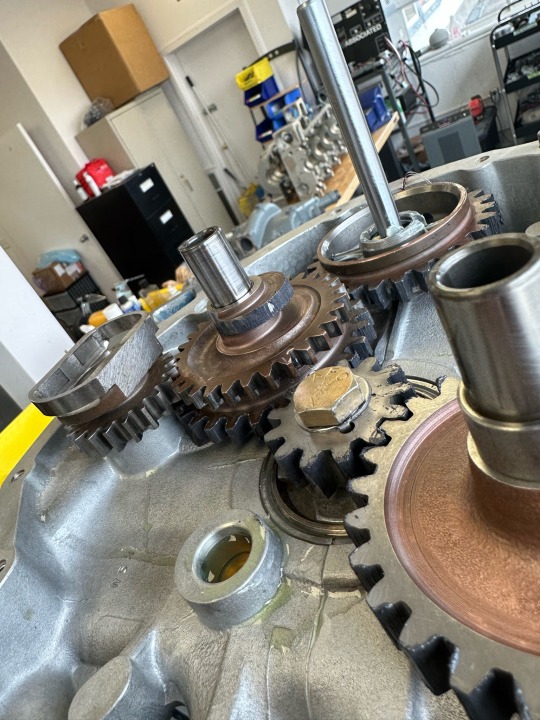
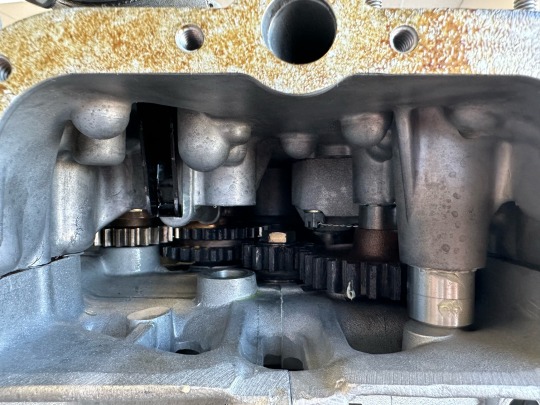
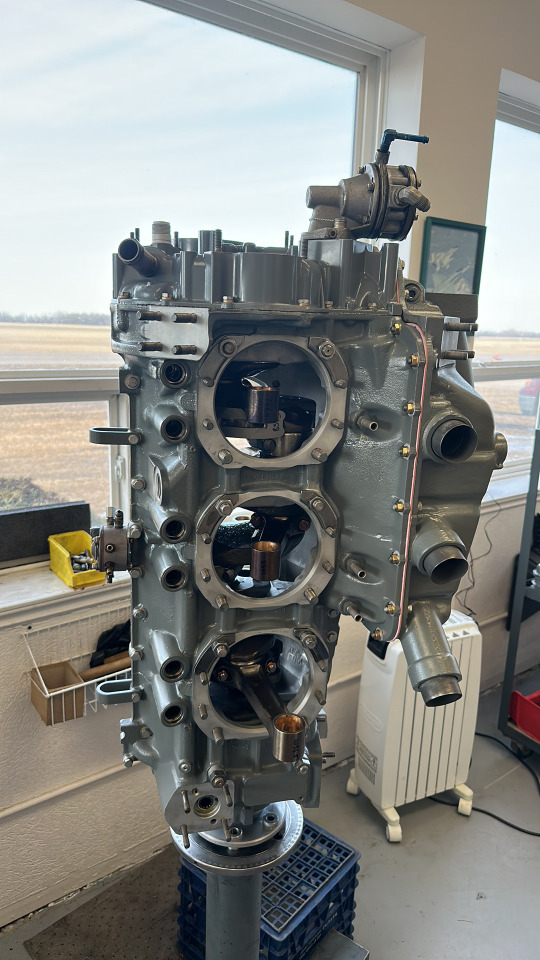
Made a lot of visual progress today on the IO-540. Once the block is together we stand the engines up and build up idler gears and part of the drive train before installing the accessory case. Unlike Continentals where the accessory “case” is integral to the crankcase, the accessory case on a Lycoming needs to be build up externally after the crankcase is assembled. This particular engine has more internal gears than most of the others I’ve worked on, so it took a bit more time to set it all up. There’s still a lot of external components, fittings, and lines to install, which I should be able to finish tomorrow in addition to installing the cylinders.
2 notes
·
View notes
Text


From dry fit for bearing measurements yesterday to fully closed and assembled today. I’m switching tracks this week from TCM engines back to a IO-540 Lycoming that had a prop strike. The work involved in the inspection and repair following a prop strike is usually as much as an overhaul. Everything must still be disassembled, inspected, and major components sent for NDT. The list of parts required might not be as long, depending on the situation, because the mandatory parts replacement of an overhaul isn’t normally applicable. Sometimes the damage is significant enough to warrant an overhaul for the sake of costs, but luckily for this customer that wasn’t the case.
9 notes
·
View notes
Text


I had a great vacation visiting my family in Australia, but now it’s back to the grind. Finally got the TCM O-200A that I was working on before the trip fully assembled and on the test stand. Hopefully the break in run goes well and we can deliver her to her owner this weekend!
1 note
·
View note
Text


Some days builds go so smoothly it makes you question if you forgot something. Some days, nothing goes smoothly and you have to use all your brain power to fix that last stud that ripped out when bolting the sump on.
7 notes
·
View notes
Text

Switching gears this week from the big block to build up a C90-to-O200 conversion. You’d think the smaller engine would be easier, but it has its own set of challenges. These engines aren’t in production any longer so it was a bit of a scramble to find solutions for the owner when his original engine came back from non-destructive testing with significant issues. It’s finally coming together and we can hopefully get this little guy fully assembled and tested right away.
1 note
·
View note
Text


With every assembly, taking time to balance the moving components is a critical step. We try to keep weight differences between cylinder bays and the hemispheres of the engine as small as possible so that there isn’t a built in imbalance from the start, which can lead to accelerated wear. Connecting rods are machined or resized accordingly, as they are one of the few components where we can adjust their weight without sacrificing structural integrity. They’re then matched with pistons and pins that complement them for optimum weight combinations.
1 note
·
View note
Text

Short block assembled and ready for cylinder installation! Wish I could say this is half way but there’s a lot of work to go yet, but hopefully it will be ready for the test stand in a couple days.
6 notes
·
View notes